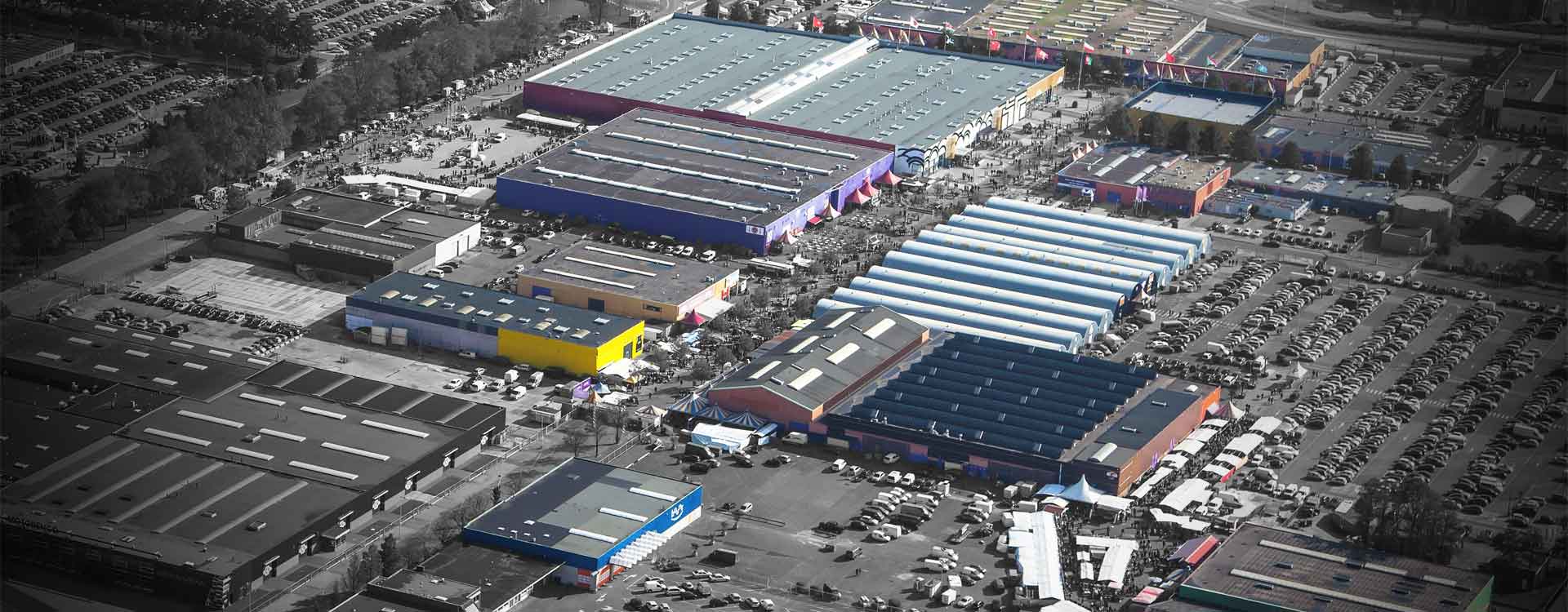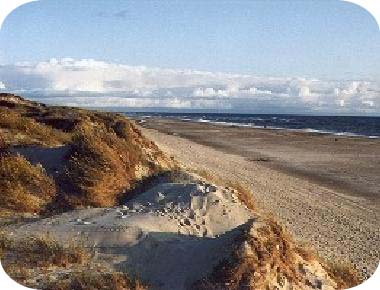 A kilometers-long sandy beach is waiting for you and there are no opening hours. You will have unlimited access: in the morning for a refreshing walk, in the afternoon for the bustle and in the evening for a romantic sunset.
A kilometers-long sandy beach is waiting for you and there are no opening hours. You will have unlimited access: in the morning for a refreshing walk, in the afternoon for the bustle and in the evening for a romantic sunset.In addition to this beautiful gift from mother nature, the area behind the dunes is also perfect for a day trip. Cycling along the flowering bulb fields. Watching seals on the Waddenzee. Canoeing through the waters of the polders.
In the Kop van Noord-Holland there are many nice things to experience such as: the Oude Rijkswerf in Den Helder, Fort Kijkduin built by Napoleon, Viking House, Marine Museum, Texel with Ecomare, the folcloristisc market of Schagen, the the oldest sail-through vegetable auction in the world in Broek op Langedijk, Steam train Hoorn, Fairytale Wonderland, Zuiderzeemeuseum and much more.
We have highlighted 15 villages and towns for you where you will be able to enjoy yourself. We have indicated the distance to Julianadorp.
* Den Helder,
* Breezand,
* Anna Paulowna,
* Callantsoog,
* Schagen,
* Kolhorn,
* Petten,
* Den Oever,
* Schoorl,
* Bergen aan Zee,
* Heerhugowaard,
* Alkmaar,
* Hoorn,
* Beverwijk,
Welkom in Holland North of Amsterdam.
|
The most northerly city in the Kop van Noord-Holland is the city of Den Helder, the only city in the Netherlands that is located by the North Sea. Surrounded by water in the north, east and west and best known for the Royal Navy and the National Fleet Days.  In earlier centuries the ships of the VOC were guided through the treacherous waters around Den Helder without a problem. The construction of a breakwater in 1780 and the visit of Napoleon in 1811 to the Gibraltar of the North, as the emperor called Den Helder, ensured a period of prosperity for the city in which the Royal Navy still occupies a prominent place to this day.
In earlier centuries the ships of the VOC were guided through the treacherous waters around Den Helder without a problem. The construction of a breakwater in 1780 and the visit of Napoleon in 1811 to the Gibraltar of the North, as the emperor called Den Helder, ensured a period of prosperity for the city in which the Royal Navy still occupies a prominent place to this day.Because Den Helder is known as the home base of the Dutch Royal Navy, which is an important employer for the city and the surrounding area. Most naval activities are therefore concentrated in or near the city: for most ships it is their home port, there is also a (maintenance) yard, various workshops and training courses (including the Royal Institute for the Navy (KIM) and near the city is naval airfield De Kooy, where air shows are held, and a marines barracks (the Joost Dourleinkazerne on Texel). On January 22, 2005, a fire broke out in the former town hall of Den Helder on the Kerkgracht. The roof collapsed, but the outer walls were still standing. The turret was removed for security reasons. It has now been restored and returned to its old form. The property was built in 1851 in art deco style. An orphanage was also established in the 1920s. Nieuwe Diep or Helder, just two of the names used for Den Helder, has all the possibilities for shopping, sitting on a terrace or just strolling around. Restaurants and bars come in all kinds of nationalities, which is characteristic of the maritime character of the city. The city center has a wide range of shops and an indoor shopping center. To the south of Den Helder, kilometers of sandy beaches stretch to the seaside resort of Petten. The dune area offers numerous cycling and hiking trails. In addition to the beach, Den Helder offers plenty of indoor entertainment if the weather is not good, including Fort Kijkduin with a North Sea Aquarium, the Rijkswerf Willemsoord with the Marine Museum with a submarine and the Rescue Museum 'Dorus Rijkers'. The greenhouse complex Hortus Overzee Den Helder with Japanese garden, mega cinema Utopolis, theater De Kampanje and Kinderspeelparadijs (children's play paradise) Ballorig can also be visited in Den Helder. 
Just north of Fort Kijkduin is lighthouse De Lange Jaap. It has long been the tallest cast iron lighthouse in Europe (63.45m). Uniquely, the entire lighthouse is constructed from cast iron plates, which makes the lighthouse very heavy. The 16-sided tower was built in 1877. The light was be turned on on April 1, 1878.  The old water tower in Den Helder was built in 1856 and was the oldest water tower in the Netherlands. The tower was built on the initiative of the navy and the municipality of Den Helder to provide ships with clean drinking water.
The old water tower in Den Helder was built in 1856 and was the oldest water tower in the Netherlands. The tower was built on the initiative of the navy and the municipality of Den Helder to provide ships with clean drinking water.The number of private households connected to the water mains was limited in the first years. This was because a household bucket with water could be obtained for a small fee from the street sources or from the water farmers, who brought their fresh goods by cart or barge. The new water tower was designed by architect Jan Schotel and was built in 1908. The water tower has a height of 40.15 meters and a water reservoir of 400 m3. The tower is located at the T-junction of the Vijfsprong and Polderweg and was renovated in 1956 and 2005. It is also possible to take a cruise through the harbor or a day of sea fishing. A day trip to Texel can be made from Den Helder, but Wieringen and Schagen are also worth a visit. The ferry boats to Texel depart from Den Helder. Most residents of the municipality of Den Helder live in the city of the same name, roughly approx. 44,000. The most important parts of Den Helder are Nieuw-Den Helder, De Schooten and Den Helder city center. The other residents of the municipality live in the centers of Julianadorp (around 15,000) and in Huisduinen (around 1,000). These centers are now regarded as neighborhoods, because they are close to the city of Den Helder. Huisduinen is also the original Den Helder; later a second neighbourhood was built near Huisduinen. This was called Den Helsdeur (door), because the city was a hell for the enemy ships that wanted to sail into the Zuyderzee because of its strategic location. Later it was called Den Helder. A different name used for Den Helder was 'Nieuwediep'; the inhabitants are still known as 'Nieuwediepers'; they are also called 'Jutters'. More about the history of Den Helder can be found on Den Helder, van "buyrt" naar marinestad. |
Breezand is a village in the municipality of Hollands Kroon. On April 30, 1993, the museum of the association Oud Anna Paulowna was opened amidst the bulb fields of Anna Paulowna. (Address: Zandvaart 5, Breezand) The museum deals with the reclamation of the Anna Paulowna Polder, flower bulb cultivation in and around Breezand, life and work in this polder, the administrators, etc. In the museum you will also find information about Queen Anna Paulowna, wife of King Willem 2, after whom the municipality is named. Each year, an average of six changing exhibitions and / or exhibitions are held. Annual Events: * "Talent in 't Museum" Exhibition and demonstrations of hobbies and art in many areas during the flower days. * Ascension Day, "Museum Ride" with historic motorbikes through the North Holland head start and finish at the museum. Here you can also view the bikes. 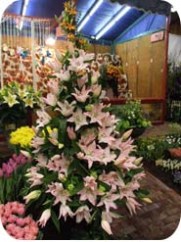 The municipality of Hollands Kroon has the largest area of flower bulbs in the Netherlands within its borders. This is shown annually with a flower bulb exhibition "De Lentetuin" (end of February) and with "De Bloemendagen", when many mosaics of hyacinth nails are placed along the roads. For more information about the flower days, take a look at the page about Anna Paulowna.
The municipality of Hollands Kroon has the largest area of flower bulbs in the Netherlands within its borders. This is shown annually with a flower bulb exhibition "De Lentetuin" (end of February) and with "De Bloemendagen", when many mosaics of hyacinth nails are placed along the roads. For more information about the flower days, take a look at the page about Anna Paulowna.Since March 5, 1981, each edition of the Spring Garden Breezand focuses on a subject, event or place, such as Venice, London, Paris, Tirol, underwater world, fairytales, the Frisian Eleven Cities Tour, etc. De Lentetuin Breezand has grown into a professional flower show. More than twenty thousand visitors come to the Noordkop every year to enjoy a radiant spring day. Bulb growers from the Northern Zand region are making every effort to make the show a success. Their bulb flowers form the beautiful backdrop for a changing theme every year. St. Mark's Square, the Eiffel Tower and Big Ben; they are famous landmarks that sparkled among the flowers. Dolls, clothes, masks, bridges, Tower Bridge and a gondola completed the picture. As in other years, the Spring Garden shows the complete range of bulb flowers, including tulips, daffodils, hyacinths, lilies, irises, zantedeschias, crocuses and the many special bulbous plants. In addition, the visitor enjoys beautiful flower arrangements and vegetation. The flower bulb growers do their utmost to get the quality at an exceptionally high level every year. Adjacent to the flower exhibition is the Expo spring fair with all kinds of attractive items for home and garden. There is also the Body & Mind square where the visitor can go for inner and outer care. There is also plenty to do for children. They can go to the small farm or have fun in the special craft corner. |
|
Anna Paulowna is part of the municipality of Hollands Kroon, which consists of the places: Wieringen, Wieringermeer, Anna Paulowna / Breezand and Niedorp. The inhabitants of the polder have been through a lot in its relatively short history. From poverty on the western sandy soils around Breezand to a flood in 1916. The arrival of flower bulb culture, after 1911, eventually also brought prosperity to the sandy area.  Only around 1600 was it possible to reclaim some parts of the drowned area (Zijpe and Wieringerwaard). The Anna Paulownapolder was the last to be reclaimed with private funds in 1846. Anna Paulowna was the consort of King Willem II who ruled Holland at that time. She has given her name to this polder of more than 5,000 hectares.
Only around 1600 was it possible to reclaim some parts of the drowned area (Zijpe and Wieringerwaard). The Anna Paulownapolder was the last to be reclaimed with private funds in 1846. Anna Paulowna was the consort of King Willem II who ruled Holland at that time. She has given her name to this polder of more than 5,000 hectares.A former stream channel, the Oude Veer, eroded by centuries of ebb and flow, divides the municipality into an Oostpolder and a Westpolder, but also unites, because in recent years it has become a water sports center, which is visited by the entire population. The sandy soil of the Westpolder, where before the arrival of fertilizer (around 1890) and for the improved water management, only one cow could be kept on five hectares, turned out to be extremely suitable for flower bulb cultivation in 1912. After 1920, a second colonization of pioneers started, which made Breezand the most densely populated part of the polder. The municipality of Anna Paulowna has now grown into the largest continuous bulb area in the world. 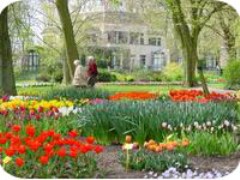 After the reclamation of the Anna Paulowna polder, a Polder building with offices was founded in the most centrally located residents' core - Kleine Sluis, on the Molenvaart opposite the current town hall - in which the Polder administration was seated. Naturally, a beautiful garden had to be created around this building. And that is how the Poldergarden was eventually created.
After the reclamation of the Anna Paulowna polder, a Polder building with offices was founded in the most centrally located residents' core - Kleine Sluis, on the Molenvaart opposite the current town hall - in which the Polder administration was seated. Naturally, a beautiful garden had to be created around this building. And that is how the Poldergarden was eventually created.Admission is completely free. The garden can always be visited. The garden is at its best in the period from the end of January to May and mid-June, because then bulb and tuberous plants are almost always in bloom. 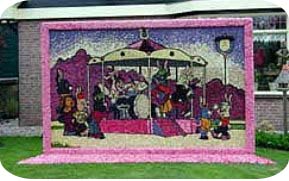 Every spring, so-called "Flower Days" are held in Anna Paulowna. During this event, attended by tens of thousands of people every year, flower mosaics made by local people are exhibited and admired along the roads. Hundreds of people work together every year to make around 100 mosaics.
Every spring, so-called "Flower Days" are held in Anna Paulowna. During this event, attended by tens of thousands of people every year, flower mosaics made by local people are exhibited and admired along the roads. Hundreds of people work together every year to make around 100 mosaics. In May, the inhabitants of the municipality of Anna Paulowna will show what beautiful flowers are and what this bulb region in the head of North Holland is capable of. During the flower days, the many flower bulb fields in this municipality are in full bloom. Which is a beautiful sight. 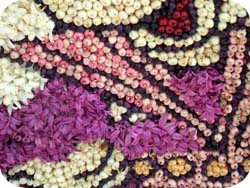 The mosaics are made from the flowers of the hyacinth. A lot of patience is required to make a mosaic. Although many preparations take place earlier in the year, most of the work cannot be started until a few days before the start of the Flower Days. The flowers then have to be pricked one by one with a pin on a plate of tempex, about 10,000 flowers and pins per m2.
The mosaics are made from the flowers of the hyacinth. A lot of patience is required to make a mosaic. Although many preparations take place earlier in the year, most of the work cannot be started until a few days before the start of the Flower Days. The flowers then have to be pricked one by one with a pin on a plate of tempex, about 10,000 flowers and pins per m2. Click on the picture to see for yourself what a painstaking job it is ... Streets and bridges form a separate category. These are adorned with daffodil garlands and brightened up with beautiful flower arrangements. But there is more ... There is more to do during the Flower Days: of course there are the beautiful bulb fields, but also many exhibitions, markets, cycling and walking tours, demonstrations, almost all of which are free of charge. A free overview of all activities is available at the information posts. Do not forget to visit the Poldertuin aan de Molenvaart, a beautifully landscaped garden where you will find all the crops that are grown in this area. Maps are available at the information posts. There are special routes for cyclists and walkers. A visit to Hof van Anna Paulowna is really recommended. In the municipality of Anna Paulowna, the three mills on the border of the Anna Paulowna polder and the Wieringewaard polder are worth visiting. The Oud Anna Paulowna museum in Breezand and Stichting Oudheidkamer Wieringewaard "Het Polderhuis" are also worth a visit. Music center de Waert in Wieringewaard often hosts concerts and performances.  Landgoed Hoenderdaell is a piece of un-Dutch landscape in the Anna Paulowna Polder. Built by the Kruijff family who opened it to the public. Even before that, it was no exception to regularly see a group of rheas on the dike from the Van Ewijcksvaart. Landgoed Hoenderdaell is a piece of un-Dutch landscape in the Anna Paulowna Polder. Built by the Kruijff family who opened it to the public. Even before that, it was no exception to regularly see a group of rheas on the dike from the Van Ewijcksvaart. The estate is located on an island in the Oude Veer. The park includes an exotic greenhouse where caimans and trumpeting flamingos reside. In the petting zoo plenty of goats, chickens and rabbits, but there is also a couple of zebras on the animal meadow. There is a walking route of about 6 km. You may encounter red deer on this walking route. Unfortunately, these animals can easily escape from the estate and end up in inhabited areas with roads. This has already resulted in the shooting of deer and the fate of 12 other deer is still uncertain. The management of Landgoed Hoenderdaell would do well to make these escapes impossible as they are responsible. In recent years, Hoederdaell has also become a shelter for exotic animals such as for tigers and lions from circuses. An important European long-distance walking route, the walking route E9, runs through Anna Paulowna. The Dutch part of the E9 is called the Hollands Kustpad. The Hollands Kustpad has a length of approximately two hundred and thirteen kilometers. The route of the Hollands Kustpad is described in a walking guide published by the Wandelnet and the Nivon. The lion's share of the route goes through the dune landscape, but there are also a few trips in the polder landscape of North Holland. Hence, the route also passes Anna Paulowna. More information about Anna Paulowna |
Back to MENU
|
Callantsoog, a small village in the head of North Holland right on the North Sea. Located directly behind the narrowest row of dunes that hold back the rough waves of the North Sea. Where you can feel the natural elements of the wind, rain and SUN deep inside you. Callantsoog, located on the old island 't OGhE, which can still be recognized so beautifully in the reclaimed landscape. The village square of Callantsoog is the old dune valley 't Oogh, where the residents fled in 1570/1573 when the old village was flooded by the sea. The current village (approx. 2,600 inhabitants - more than 10,000 in summer) had two earlier versions that were swallowed up by the sea. The village square of Callantsoog, now a cozy meeting center for villagers and tourists.  In the village square there is still an untouched West Frisian farmhouse. Aunt Jaantje was the last resident. After her death, in consultation with her children in 1992, the house was sold to the Callinger Heritage Foundation, who use it as Museumboerderij Tante Jaantje . The main theme of the historical museum is "life and work in the old Callantsoog". In the village square there is still an untouched West Frisian farmhouse. Aunt Jaantje was the last resident. After her death, in consultation with her children in 1992, the house was sold to the Callinger Heritage Foundation, who use it as Museumboerderij Tante Jaantje . The main theme of the historical museum is "life and work in the old Callantsoog".  Callantsoog is part of the so-called Northern Sand Area. This area consists of land that has been flooded by the sea and reclaimed by man.
Callantsoog is part of the so-called Northern Sand Area. This area consists of land that has been flooded by the sea and reclaimed by man. The soil is always sandy and has a high percentage of salt. There is always a little wind in this area. In short, a great area for bulb cultivation. Tulips, hyacinths, daffodils, crocuses, snowdrops and many other types of flower bulbs are grown here. More information and photos about Callantsoog can be found at INFO |
Back to MENU
 Schagen is an old town. The town already appears in texts around 975. Ancient written sources state that six hooves, located at "Scagha" (this would have the meaning of "protruding point or headland), were transferred to the abbey at Egmond. We may therefore assume that Schagen has been permanently inhabited from the tenth century.
The number of residential mounds (terps) that are the most important in and around Schagen, in relation to those in the vicinity, points in that direction.
Schagen is an old town. The town already appears in texts around 975. Ancient written sources state that six hooves, located at "Scagha" (this would have the meaning of "protruding point or headland), were transferred to the abbey at Egmond. We may therefore assume that Schagen has been permanently inhabited from the tenth century.
The number of residential mounds (terps) that are the most important in and around Schagen, in relation to those in the vicinity, points in that direction. Notable landmarks of Schagen are the Grote Kerk on the Markt, a rare Protestant example of Gothic Revival and the, also neo-Gothic, Roman Catholic Christopher Church after a design by Alfred Tepe. The oldest bell in the Netherlands hangs in the Christoforus Church, cast in 1478 and dedicated to the missionary Liudger. When approaching Schagen, the church towers can be seen from a great distance. Furthermore, the rebuilt Slot Schagen (with authentic castle towers), the Markt, the Regional Museum 1940-1945 Schagen , the museum farm Vreeburg and the Recreation Harbor Schagen, which opened in 2005, are interesting. During the summer months there is the West Frisian Folklore . And then there is the Schager Wiel, a nature reserve around the lake 'De Wiel' and the adjacent swimming pool De Wiel. Also its museum Slag van de Somme (a three-storey museum in a high tower with a collection of old uniforms, helmets, weapons and ammunition) and the Cheese Museum "Te Hooi en te Gras" are fun to visit. As the largest core in a region full of small villages and hamlets, Schagen is an important regional center. Not only the market on Thursday attracts a large audience; especially the many parties that are organized in the city throughout the year attract attention.  The previously mentioned West Frisian Folklore is there every Thursday at the Schager Markt in the summer months. Various old crafts are exhibited and reenacted in the center. The highlight is the large parade that passes over the market area in the afternoon. Old carriages, gentlemen and ladies in various costumes and of course music make this parade a popular attraction that, especially in good weather, attracts many tourists to Schagen. The previously mentioned West Frisian Folklore is there every Thursday at the Schager Markt in the summer months. Various old crafts are exhibited and reenacted in the center. The highlight is the large parade that passes over the market area in the afternoon. Old carriages, gentlemen and ladies in various costumes and of course music make this parade a popular attraction that, especially in good weather, attracts many tourists to Schagen. Tens of thousands of visitors a day. Each week has a different theme. Popweekend is also known in Schagen, where various artists perform. This takes place on two stages. This festival always takes place on the first weekend of August. Well-known (former) residents of Schagen are: Marchien Bakker, psychic, winner of In search of the sixth sense; Carel Beke, writer of, among others, Pim Pandoer; Herman Berghuis, singer and dancer, Idols participant; Karin Bloemen, singer and cabaret artist; Carlo and Ron Boszhard, presenters; Gerard Joling, singer and presenter; Saskia and Serge, singer and singer; Gijs Staverman, DJ / presenter and Jurgen Smit, presenter. |
Back to MENU
 The former fishing village 'Colhorn' is a picturesque old fishing village, which until 1844 was situated on the old Zuiderzee, at the foot of the West Frisian dike and has existed for at least 650 years. Information about Kolhorn is known dating back to 1288. The first report of occupation dates from 1514. Due to the various land reclamation, it is now in the middle of the North Holland landscape. However, the appearance of a fishing village has remained, it seems as if time has stood still. You will be impressed by the beautifully restored houses and buildings, of which the village church from the 17th century is the centerpiece.
The former fishing village 'Colhorn' is a picturesque old fishing village, which until 1844 was situated on the old Zuiderzee, at the foot of the West Frisian dike and has existed for at least 650 years. Information about Kolhorn is known dating back to 1288. The first report of occupation dates from 1514. Due to the various land reclamation, it is now in the middle of the North Holland landscape. However, the appearance of a fishing village has remained, it seems as if time has stood still. You will be impressed by the beautifully restored houses and buildings, of which the village church from the 17th century is the centerpiece.  The annual Night Market is held in August. The market takes place in the evening between 6:30 PM and 1:00 AM and consists of approximately 325 stalls and stalls that are arranged around the old harbor and the church. The market and the oldest part of the village are beautifully lit on these evenings and well worth a visit. The stalls and stalls are richly varied in their range. Every year the night market stands for fun and entertainment for young and old.
The annual Night Market is held in August. The market takes place in the evening between 6:30 PM and 1:00 AM and consists of approximately 325 stalls and stalls that are arranged around the old harbor and the church. The market and the oldest part of the village are beautifully lit on these evenings and well worth a visit. The stalls and stalls are richly varied in their range. Every year the night market stands for fun and entertainment for young and old.  Seaside resort Petten (Municipality of Zijpe) is situated at the foot of the 5.5 km.
Seaside resort Petten (Municipality of Zijpe) is situated at the foot of the 5.5 km. 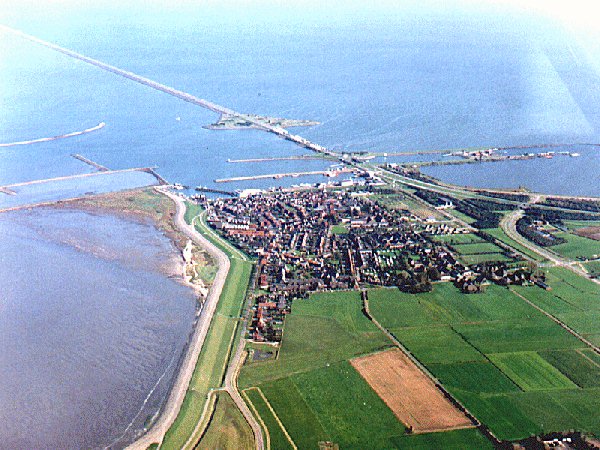 Den Oever is a village located in the municipality of Wieringen, in the province of North Holland. It is located right on the Afsluitdijk. The village is best known for shrimp fishing.
Den Oever is a village located in the municipality of Wieringen, in the province of North Holland. It is located right on the Afsluitdijk. The village is best known for shrimp fishing. 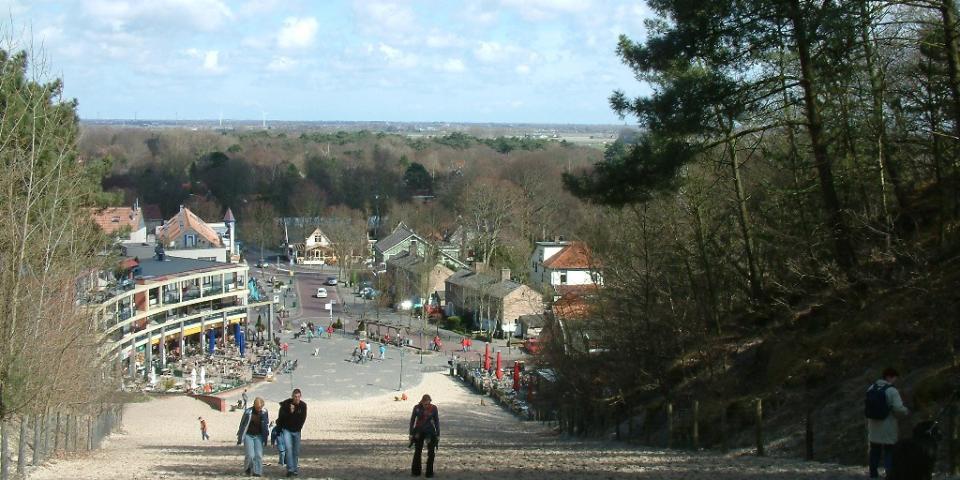 And then the favorite village of diet guru Sonja Bakker, where she even has a holiday home:
And then the favorite village of diet guru Sonja Bakker, where she even has a holiday home: 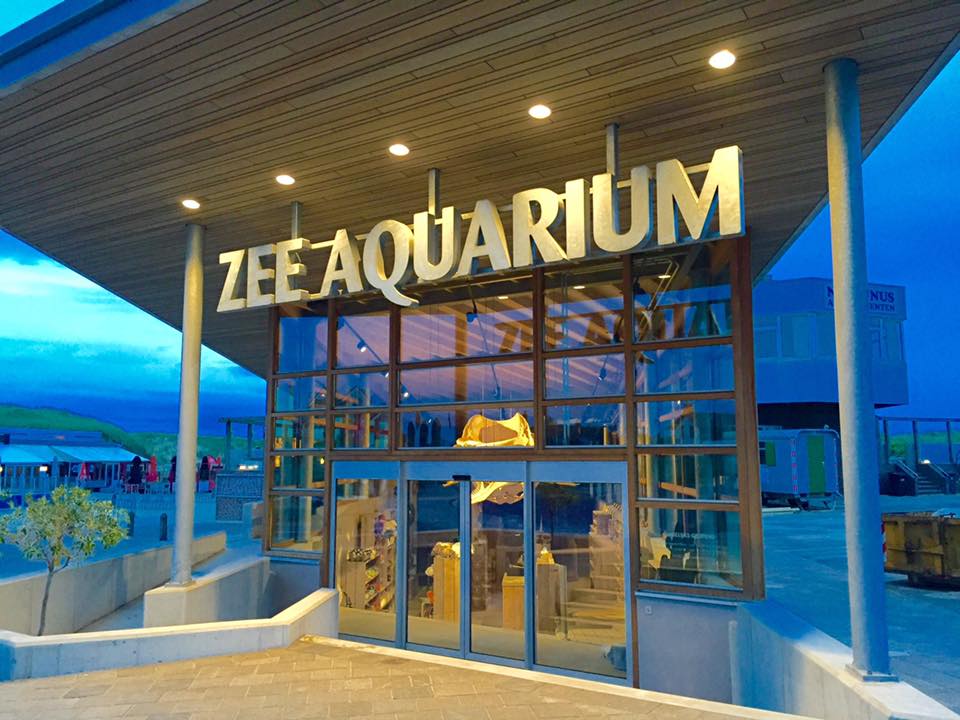 At the main beach entrance you will find the
At the main beach entrance you will find the  In Veenhuizen you will find the national monument 'The mausoleum of Reinout van Brederode' in the church and the Veenhuizermolen can be found at Venhuizerkade 3. This North Holland polder mill was built around 1650 and restored in 1972 and is also a national monument.
In Veenhuizen you will find the national monument 'The mausoleum of Reinout van Brederode' in the church and the Veenhuizermolen can be found at Venhuizerkade 3. This North Holland polder mill was built around 1650 and restored in 1972 and is also a national monument.  The
The  Visit the
Visit the 